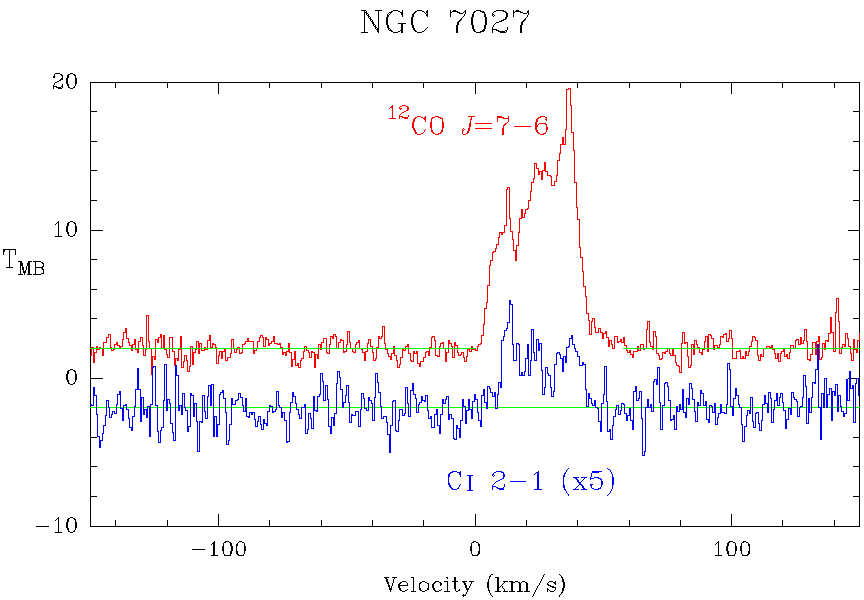CI(2-1)(809 GHz) and CO(7-6) (807 GHz)


For CI(2-1) (809 GHz) the average Tsys was 4700 K with a total integration time off 38 minutes on source. For CO(7-6) (807 GHz) the average Tsys was 4800 K with a total integration time of 6 minutes (on source). Tau_225 GHz was 0.031
NGC 7027 is perhaps the best studied young planetary nebula.
Planetary Nebulae form near the end of the lifetime of a star with a mass between about
1 and 8 times that of the Sun. The planetary nebula forms when the envelope
of a red giant star is expelled back into space, reveiling the hot core
of degenerate material which becomes a white dwarf. At least some of the
material which is expelled has undergone nuclear processing. In the case
of NGC 7027, the extent of nuclear processing was great enough to make
carbon more abundant than oxygen in its envelope (in most stars, for example
the Sun, oxygen is about twice as abundant as carbon).
This is first detection for both transitions in NGC 7027
(Courtesy Taco).